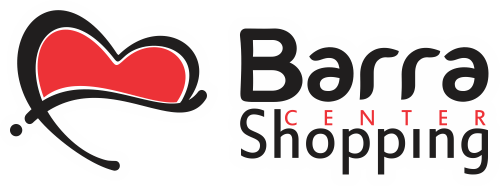Промокоди Moneyveo Купони Манівео на травень 2025
30 de abril de 2025Key Features of r2pbet You Should Be Aware Of for Enhanced Online Betting Experience
9 de maio de 2025Key Elements for Creating a Successful Retail Cleaning Program
Creating a successful retail cleaning program hinges on a few critical components that resonate with both staff and customers. A well-structured cleaning schedule ensures that spaces are maintained regularly, meeting the expectations of shoppers who prioritize cleanliness. Retail environments, where first impressions matter, benefit immensely from consistent upkeep.
Another aspect to consider is the role of customer feedback. Actively seeking input from patrons can help identify areas for improvement and reinforce the effectiveness of the cleaning efforts. This practice not only demonstrates a commitment to customer satisfaction but also serves as a tool for continuous enhancement.
Lastly, integrating quality assurance measures into a cleaning program guarantees that standards are upheld across the board. Regular inspections and assessments validate the success of cleaning initiatives and ensure that each retail space remains inviting and hygienic, essential for repeat business and customer loyalty.
Choosing the Right Cleaning Products for Different Surfaces
Selecting appropriate cleaning products is key to maintaining hygiene and appearance in retail environments. Each surface requires specific care, and using the wrong product can lead to damage or ineffective cleaning.
Hard Floors: For hard surfaces like tile or vinyl, all-purpose cleaners are often suitable. However, consider the finish. Some products may leave residues or dull the sheen. Always check for compatibility and safety labels to ensure quality assurance.
Carpets: Carpets demand specialized cleaning solutions. Opt for products designed specifically for carpet fibers to avoid discoloration and preserve texture. Look for eco-friendly options that minimize chemical exposure while still offering thorough cleaning.
Glass: For windows and display cases, glass cleaners work best. These formulas help achieve streak-free clarity, enhancing the shopping experience. Ensure the cleaner is safe for use on tinted or treated glass to prevent damage.
Furniture: Wood and metal surfaces have unique needs. For wood, use cleaners labeled as safe for finished surfaces. These preserve the finish while removing dust and fingerprints. Metal furniture can be cleaned with mild detergents, ensuring no harsh chemicals are used that might cause corrosion.
Electronics: Cleaning electronic devices requires non-abrasive materials and solutions specifically made for screens. Always check instructions from manufacturers to avoid voiding warranties or causing harm.
By choosing products tailored to each surface type, a retail cleaning program can maintain a safe and inviting environment while adhering to quality assurance standards.
Developing a Schedule That Meets Peak Business Hours
Creating a cleaning schedule that aligns with retail peak hours is key to maintaining a clean environment without disrupting customer experiences. Below are actionable steps to achieve this goal:
- Analyze Customer Traffic:
Utilize sales data and customer feedback to identify the busiest times of day and week. This analysis will guide the timing of cleaning tasks.
- Select Optimal Cleaning Times:
Plan cleaning activities during low traffic periods. Early morning or late evening shifts might be ideal for extensive cleaning tasks, while quick spot cleanings can occur throughout the day.
- Incorporate Employee Training:
Train staff on how to perform quick cleaning tasks during regular operations. This ensures areas remain tidy without disturbing customers.
- Communicate the Schedule:
Share the cleaning schedule with employees to ensure everyone knows when and where cleaning activities will take place. This promotes cooperation and minimizes disruptions.
- Solicit Ongoing Feedback:
Regularly seek customer feedback about cleanliness during peak times. Use this information to adjust cleaning schedules as needed.
By aligning your cleaning schedule with customer traffic patterns,
you enhance the shopping experience while maintaining high cleanliness standards. For further insights into effective cleaning practices, visit https://universal-cleaning.uk/.
Training Staff on Best Practices and Safety Protocols
Training staff on best practices and safety protocols is a key element of a successful retail cleaning program. Comprehensive employee training not only enhances the quality of cleaning tasks but also helps maintain a safe environment for both employees and customers. Understanding the specific cleaning methods for various surfaces can prevent damage and promote longevity.
Regular training sessions should cover the latest cleaning techniques, proper use of equipment, and effective methods for applying cleaning products. This knowledge ensures that employees can perform their duties with confidence and competence. Incorporating customer feedback into training can further align cleaning practices with customer expectations, leading to increased satisfaction.
Quality assurance measures should be implemented to assess the effectiveness of the training programs. Regular evaluations and audits will help identify areas for improvement, ensuring that staff remains well-informed about safety protocols and best practices. Continuously updating training content based on new products or methods is crucial for maintaining high standards in retail cleaning.
Measuring Results and Gathering Feedback for Continuous Improvement
Establishing a successful retail cleaning program relies heavily on how well results are measured and feedback is incorporated into ongoing processes. Regular evaluation phases should be integrated to assess cleanliness standards in alignment with customer expectations and operational benchmarks.
Collecting customer feedback is a valuable practice. Surveys, comment cards, and direct communication channels allow customers to express their opinions on cleanliness. Understanding their perceptions can highlight areas needing improvement and reinforce successful practices.
In addition, quality assurance measures should be put in place. This may include routine inspections, audits, and performance metrics specific to cleaning outcomes. Utilizing these tools can identify trends and areas where staff may require additional support or training.
Employee training plays a significant role in the effectiveness of a cleaning program. Regular training sessions should include updates on best practices, safety protocols, and any new products or technologies. Creating an environment where staff feels equipped and knowledgeable enhances their ability to maintain standards that meet both customer expectations and business goals.
Continuous improvement thrives on feedback cycles. Consistently analyzing data from feedback and inspections, combined with ongoing employee training, ensures that the cleaning program evolves in alignment with customer needs and operational efficiencies.
